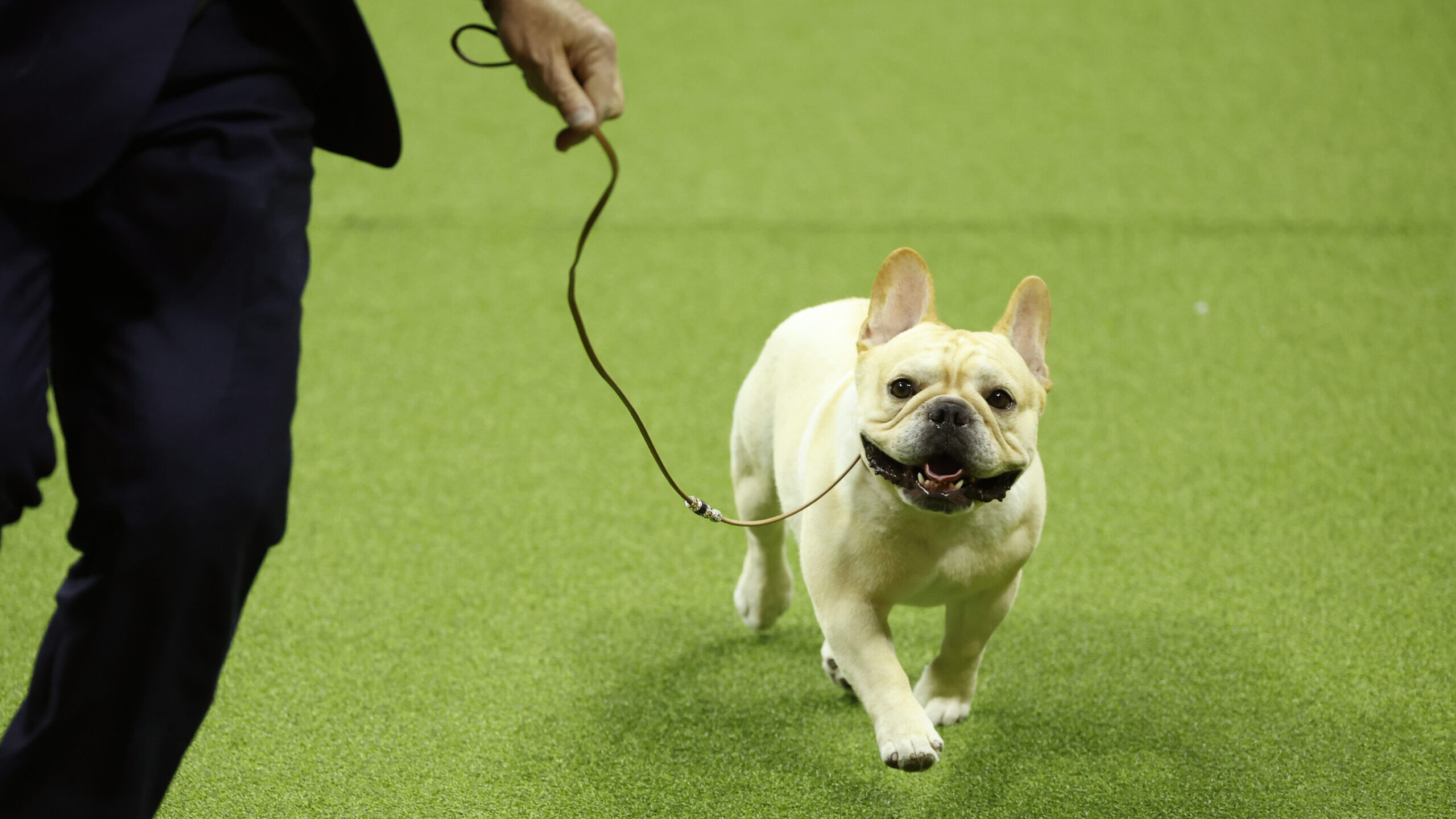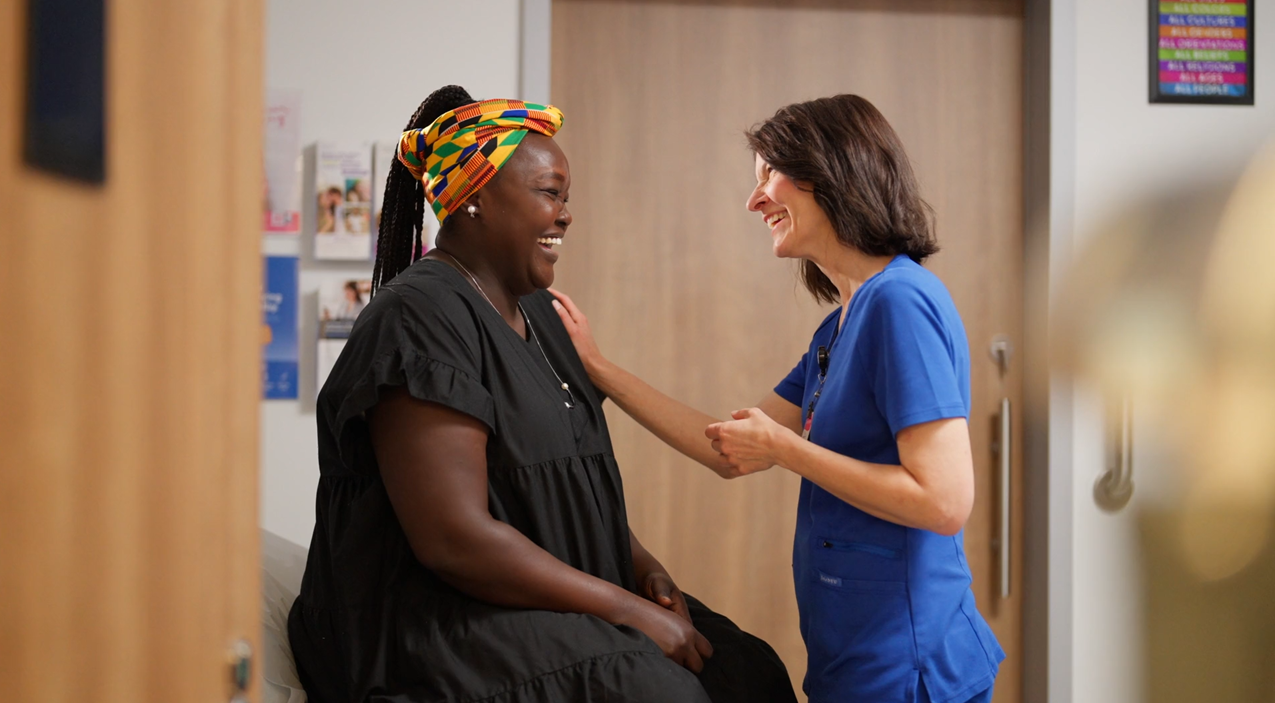French bulldogs remain popular US breed in new rankings. Many fans aren’t happy
Mar 20, 2024, 2:30 PM

Winston, the French Bulldog, winner of the Non-Sporting Group, competes in the 147th Annual Westminster Kennel Club Dog Show Presented by Purina Pro Plan at Arthur Ashe Stadium on May 08, 2023 in New York City. (Sarah Stier/Getty Images for Westminster Kennel Club)
(Sarah Stier/Getty Images for Westminster Kennel Club)
NEW YORK (AP) — French bulldogs. U.S. dog owners. C’est l’amour.
French bulldogs remained the United States’ most commonly registered purebred dogs last year, according to American Kennel Club rankings released Wednesday. The club calls the Frenchie the most popular breed, though other canine constituencies may beg to differ.
Is it a coup to be celebrated? Au contraire, say longtime fans who rue what popularity is doing to the breed. Nevertheless, after lapping Labrador retrievers to take the top spot in 2022, the bat-eared, scaled-down bulldogs held on in the new standings, which reflect puppies and other dogs that were added last year to the United States’ oldest dog registry.
Meanwhile, dachshunds are at a nearly two-decade peak, the cane corso is making moves, and there’s a new breed in the mix.
Of course, purebreds are only part of the canine population in the U.S., where animal shelters faced an influx of all sorts of dogs last year. Here’s a snapshot:
Top 10
After French bulldogs, the most common breeds registered were Labs, golden retrievers, German shepherds and poodles. Then came dachshunds, bulldogs, beagles, Rottweilers and German shorthaired pointers.
All were also in the top 10 in 2022. A decade ago, Yorkshire terriers and boxers were in the group. Go back a half-century, and the third most popular breed was the Irish setter — now 76th.
Pooch preferences shift for reasons ranging from media exposure (social and otherwise) to changing lifestyles as more Americans have moved to cities.
The statistics have limits. Registration is voluntary, the AKC releases few raw numbers, and the popularity rankings measure only the club’s roughly 200 recognized breeds. They don’t include doodles, other deliberate hybrids or everyday mixed-breed dogs, though those can be registered as “all-American dogs” for such sports as agility and obedience.
The Frenchie Malaise
Nearly 98,500 French bulldogs joined the AKC pack last year, after a whopping 108,000 in 2022.
The small, solidly built, push-faced dogs have a penchant for comically pensive expressions and often take city living in stride. “They’re interesting little beings,” says Naneice Bucci, who has owned and shown them for decades.
The breed also is now a lightning rod for canine controversy and cultural critique.
There are the foreshortened snouts that can result in labored breathing, gagging, difficulty with exercise and other ills — concerns that prompted the Netherlands to ban breeding certain individual dogs with muzzles deemed too short. There are pet-store heists and violent robberies, at least one of them deadly. There’s a proliferation of Frenchies with unusual coat colors and textures, which have Frenchie folk squabbling over longtime standards.
And there’s concern among long-timers that the hot market for puppies is incentivizing people who are in it for greed, not the breed.
To Bucci, “it’s a very scary time.”
As a “preservation breeder” who follows AKC standards and conducts a battery of internationally recommended health tests before her dogs reproduce, she dreads that breeders who don’t do likewise may lead to crackdowns on everyone. And as a founder of Nevada French Bulldog Rescue, she also sees “all of the underbelly of the people who breed indiscriminately.”
“Every time we take in a Frenchie that’s in terrible condition, yes, I get angry,” says Bucci, who lives near Reno. “But at the same time, I don’t want to be punished for trying to do it right.”
Dachshund redux
Among other breeds, the unmistakable, low-slung dachshund is riding high at No. 6, its highest ranking since 2004. The dogs ranked as high as third at times in the 1950s-70s.
Their combination of sprightly cuteness, small size and determination — they were originally bred to roust badgers — endear them to many. They also have a full-sized bark and a tendency toward stubbornness.
“Even though they’re small, people have to remember: They are hounds,” says Carole Krivanich of Milton, Delaware, whose nearly 15-year-old dachshund Mo is an agility and show champion. A longtime Rottweiler owner, she’s found dachshunds to be “very versatile” and good companions.
On a course for pup-ularity
The cane corso (pronounced CAH’-neh COOR’-soh) is now 16th in the rankings, remarkable for a breed the AKC first started counting as recently as 2010. (Perhaps it helped that owners have included such figures as NBA great LeBron James and Kansas City Chiefs quarterback Patrick Mahomes.)
The dogs are praised as protective, trainable and attached to their people. But the strong breed is “not for somebody that doesn’t know how to control a dog,” AKC spokesperson Brandi Hunter Munden says.
Who’s new?
The bracco Italiano debuts in the standings at 152nd most popular. But the large, long-eared bird-hunters aren’t exactly obscure. Country music power couple Tim McGraw and Faith Hill have shared the antics of their bracchi Italiani (that’s the proper plural) on social media. A bracco co-owned by McGraw notched a first-round “best of breed” win at the prestigious Westminster Kennel Club dog show last year.
Who’s few?
The sloughi was rarest among last year’s registrations. Sometimes called Arabian greyhounds, the fleet, somewhat shy dogs joined the AKC pack in 2016.
Gimme shelter
While dogs from affenpinschers to Xoloitzcuintlis were bred last year, U.S. animal shelters were already brimming with dogs and cats. Shelters and rescue groups took in about 3.2 million dogs. Meanwhile 2.2 million dogs were adopted, according to Shelter Animals Count, a nonprofit that gathers shelter data.
There’s “a need for a renewed effort to make adoption a priority for the community,” says the group’s executive director, Stephanie Filer. Shelters have a wide variety of dogs to offer, including specific breeds, she notes.
Hunter Munden, the AKC’s spokesperson, has two rescue dogs and a purebred herself.
“Rescue is wonderful,” she said. “However, we do understand that people want specific characteristics to fit their lifestyle, when it comes to dog ownership. That’s where purebred dogs come in.”













